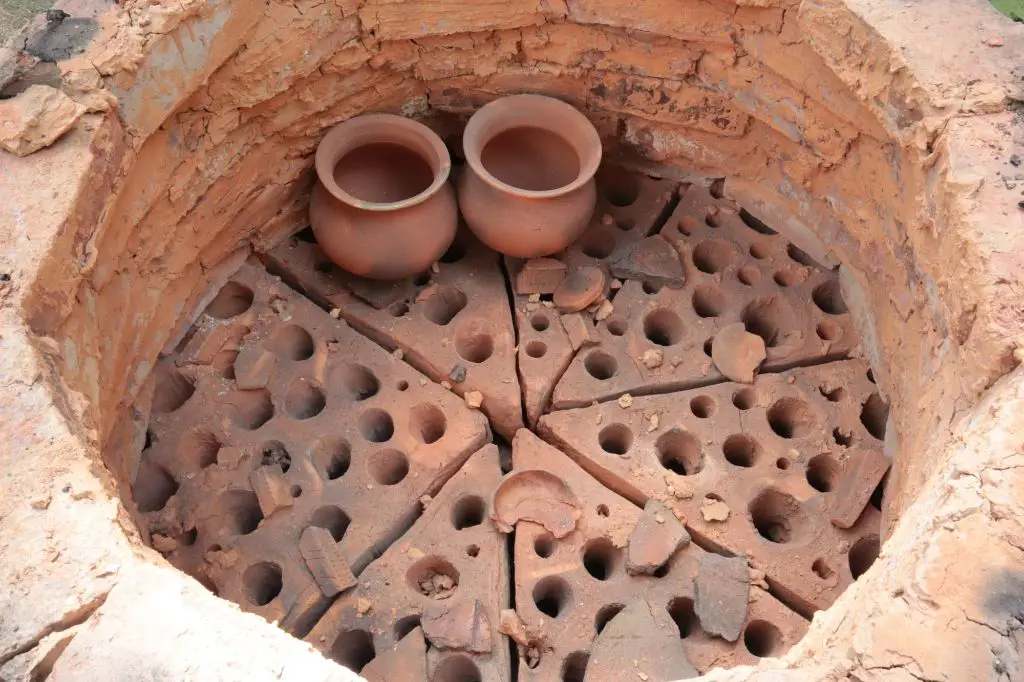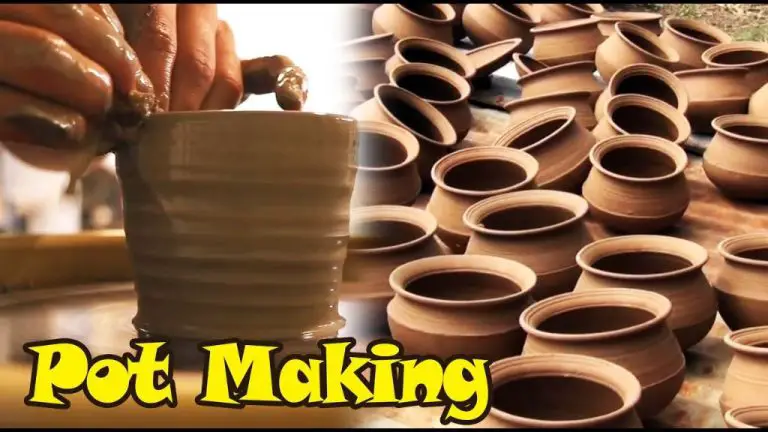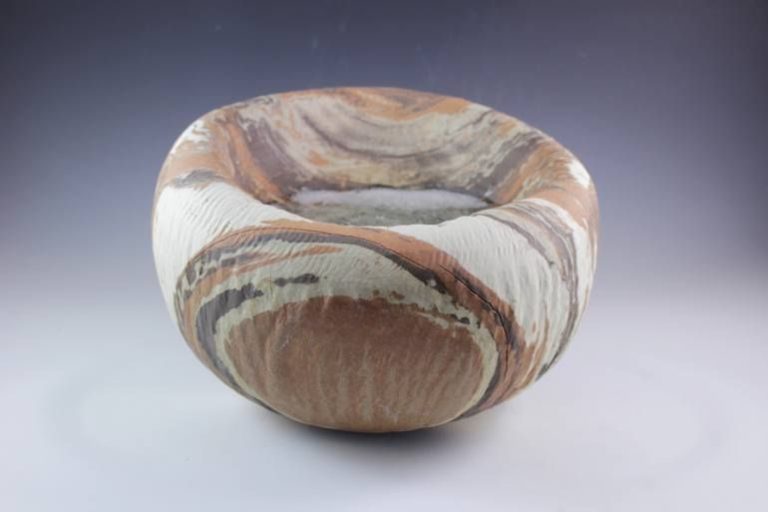Does Pottery Make Good Money?
Pottery refers to clay that has been shaped into various forms, dried, and then fired in a kiln to harden it. According to the Merriam-Webster dictionary, pottery is defined as “ceramic ware (such as vases, urns, bowls, or drinking vessels) made of fired clay.” [1] It is one of the oldest human inventions, dating back thousands of years, with artifacts found from ancient Mesopotamia, Egypt, Greece, Rome, China, and many other cultures.
Pottery is a craft as well as an art form. As a craft, it requires skill and technique to work and shape the clay on the potter’s wheel, sculpt it by hand, or use molds to form vessels and other objects. Artists approach pottery as a medium for artistic expression, creating not just functional pieces but sculptural works. There is a long tradition of pottery worldwide both for utilitarian and decorative purposes.
Brief History of Pottery
The history of pottery dates back over 20,000 years to when early humans began storing and cooking food in clay vessels. The first known pottery vessels were made in East Asia, with pottery independently developing in Sub-Saharan Africa, South America, and the Near East shortly thereafter. Some of the earliest pottery has been uncovered in China and Japan, dating back to 18,000-17,000 BC. Ceramic artifacts have also been found in the Russian Far East, dating back 20,000 years.
As human civilization progressed, pottery developed alongside. Around 9,000-8,000 BC, earthen pottery was being crafted and fired in the Near East. Pottery became more advanced and widespread between 6,000-4,000 BC, when the potter’s wheel was invented in Mesopotamia. This sped up production and allowed for more uniformity and quality in pottery vessels. Glazing techniques were also developed around this time. Pottery became an essential part of daily life for storing, cooking, and serving food and water.
Throughout history, pottery has been closely tied to cultural development around the world. Distinct pottery styles and techniques emerged in different regions, such as Ancient Greek Pottery, Chinese porcelain, and Native American pottery. Pottery artifacts provide archaeologists insights into early human history, culture, and trade networks.
Sources:
https://en.wikipedia.org/wiki/Pottery
https://www.britannica.com/art/pottery
Types of Pottery
There are three main types of pottery:
Earthenware
Earthenware is pottery that has been fired at lower temperatures, typically between 1000-1200°C. It is porous and brittle. Common types of earthenware include terracotta, Faience, and Delftware. Earthenware has been around for thousands of years and almost every early culture made use of it [1].
Stoneware
Stoneware is fired at higher temperatures around 1200-1300°C. It is less porous than earthenware, giving it increased strength and ability to hold liquids without leakage. Stoneware glazes melt at high temperatures to produce a non-porous surface. It is used to make items like crockery, jugs, and storage vessels [2].
Porcelain
Porcelain is pottery fired at very high temperatures of 1200-1400°C, resulting in fused glass-like quality free of pores. It is highly impermeable, hard, and translucent white in appearance. Porcelain originated in China and became highly prized. It is used to make items like tableware, sculptures, and decorative items.
Pottery as a Business
The ceramics market, which includes pottery, was valued at $239.53 billion globally in 2022 and is expected to grow at a compound annual growth rate of 5.2% from 2023 to 2030, according to a market report by Grand View Research.1 The pottery segment specifically accounted for over 7% of the total ceramics market share in 2021. Thus, pottery represents a sizable industry and commercial opportunity within the broader ceramics market.
The United States is one of the largest markets for pottery globally. In 2021, revenue from pottery product manufacturing in the US reached approximately $1.9 billion. Other major markets for pottery include China, Japan, Germany, the United Kingdom, France and Italy. The high demand for pottery products in both developed and developing regions presents opportunities for potters looking to start or grow a pottery business.
Startup Costs

Starting a pottery business requires some initial investments. The major costs include purchasing equipment like kilns, wheels, and tools, buying materials like clay and glazes, and securing studio space. According to Starter Story, the minimum startup costs for a basic pottery business range from $5,300 to $12,000, while a more high-end studio with multiple kilns and wheels can cost up to $18,000.
Kilns are essential for firing and hardening pottery pieces. Electric kilns are the most common for small pottery studios, ranging from small tabletop models for under $1,000 to large floor models costing $5,000 or more. Gas kilns are more expensive but can achieve higher temperatures. At minimum, one kiln is needed but many potters recommend starting with two – a smaller bisque kiln for first firings and a large kiln for finishing glazed pieces.
Pottery wheels are another significant investment, starting at around $300 for basic tabletop versions up to thousands for premium wheels with special features. Most potters use electric wheels but some prefer classic kick wheels. Having multiple wheels allows teaching students or creating production quantities.
An assortment of hand tools, clay working tables, drying racks, buckets, and other equipment will also be required, budgeting at least $1,000 for these startup necessities. Ongoing supply costs for clay, glazes, chemicals, and other consumables can range from $50 to $500 per month depending on production volumes.
The studio space itself, whether renting or buying, represents a major portion of startup costs. Pottery requires adequate space for equipment, materials, storage, and working areas. Expect to budget $2,000 per month minimum for rental fees in most areas.
Ongoing Expenses
Running a pottery business comes with regular costs that must be accounted for in order to keep operations running smoothly. Some of the main ongoing expenses include:
Raw Materials: Clay, glazes, slips, stains, and other materials needed for producing pottery require constant restocking. The cost depends on the volume and types of pieces produced, but raw materials can easily be thousands per month for an active studio. Buying clay in bulk is one way to potentially save some costs here.
Equipment Maintenance: Pottery wheels, kilns, pugmills, slab rollers, extruders, and other equipment require regular maintenance, repairs and part replacements which add up over time. For example, kiln elements may need replacing every few years at a cost of $200-500 each time depending on kiln size and type of elements, and wheels may need new bands, bearings or motors.
Utilities: Electricity and gas usage can be high, especially for firing kilns. Expect at least a few hundred dollars per month in utility bills. Proper insulation around kilns can help reduce energy costs.
Marketing: Consistently advertising and promoting pottery through channels like social media, print materials, and exhibitions has ongoing costs. Budgeting 5-10% of total sales for marketing expenses is a good guideline.
Pricing Work
Setting the right price for your pottery work is crucial for making a profit in the pottery business. There are several factors that go into determining pricing:
- Materials – The cost of clay, glazes, tools, kiln firings, etc. should be calculated into the base price.
- Time – Consider the hours spent making each piece, from wedging clay to trimming to glazing and firing. More intricate or large pieces take more time.
- Skill level – The price should reflect your skill, reputation and expertise as an artist. As you gain experience, you can charge more.
- Audience – If selling at art fairs or online, research prices of comparable work. Wholesale or retail will have different price points.
When first starting out, check pricing guides to determine fair prices based on size and type of pottery. Avoid undervaluing your work. Price high enough to cover expenses and time, but not so high that the work won’t sell.
Consider raising prices over time as your skills improve and you build a collector base. An established artist can charge premium prices for one-of-a-kind artworks. Target different price points for functional pottery vs. sculpture. Plan to discount wholesale prices by 50-60%.
Marketing and Sales
There are several effective ways to market and sell pottery products and build an audience of potential buyers. Promoting pottery starts with identifying your target market to refine the message you want prospective buyers to see (Ways to Promote Pottery). Galleries, craft fairs, online platforms, and social media provide opportunities to showcase and sell work.
Local galleries or craft stores may be interested in selling pottery on consignment or commission, giving exposure to buyers. Research galleries that sell similar types of pottery and submit professional photos of work for consideration (Finding Opportunities to Promote Handmade Pottery). Craft fairs allow selling pieces directly to buyers. Select reputable fairs that attract the target market. Create an attractive booth display to make pieces stand out.
Online platforms like Etsy and Amazon Handmade allow setting up a pottery shop to sell to a wide audience. Photograph and list pieces attractively. Social media platforms like Instagram and Facebook allow sharing pottery images and process videos to engage an audience. Post consistently and interact with potential customers.
Earning Potential
The income potential in pottery varies greatly based on factors like the scale of operation, marketing and sales, and geographic location. According to one source, the average annual income for a self-employed potter is around $30,000-$40,000 (https://thelogicalindian.com/story-feed/awareness/clay-cutlery/). However, top earning potters can make well over $100,000 per year.
Pottery can be an excellent part-time business or side income. Many potters start out working part-time before transitioning to full-time. Part-time potters may earn $15,000-$25,000 per year initially. Full-time potters with an established customer base and marketing typically earn upwards of $50,000 annually.
Key factors that increase earning potential include focusing on unique, high-quality pieces, effective marketing and sales, operating at a larger production scale, and locating in an area with a strong tourism industry or arts community. Ultimately, top earning potters position themselves as artists producing works of value, more so than as small businesses selling commodities.
Conclusion
To summarize, pottery can certainly be a viable business if approached strategically. The startup costs are relatively low, especially compared to other small businesses, and the ongoing expenses are manageable. While finding the right price point for pieces takes some trial and error, there are ample opportunities to sell both online and locally. Marketing through social media, local craft fairs, and word of mouth can slowly but steadily build recognition and a customer base. And while pottery may never make someone rich, talented artists can earn a respectable income in the $30,000 – $50,000 range with time and dedication to their craft. The keys to success are persistence, continuously developing skills, creating a diverse inventory, and tapping every sales channel possible. With passion and smart business practices, pottery can provide a fulfilling and sustainable career for the right individual.



